Cyclone Kirrily, Queensland: Warning for Australia’s east coast with residents in Townsville to Rockhampton in firing line
Queensland residents are being urged to prepare for a second cyclone within a month, with experts warning of possible “severe consequences” if it hits the coast.
The Bureau of Meteorology warned on Friday morning that there was a 55 per cent chance that a storm brewing over the Coral Sea could develop into a tropical cyclone.
On Monday, the chance of the storm turning into a cyclone rises to 75 percent, with the potential to turn into a category three or stronger storm before it hits land.
Authorities confirmed the cyclone would be named Kirrily and would pose a “significant risk” to parts of the Queensland coast – much of which is still recovering from Cyclone Jasper which struck last month.
‘There is a significant risk that this system could impact the Queensland coast from Tuesday and into next week. A serious impact is possible,” BoM’s update said.
There is a 75 percent chance that a storm brewing over the Coral Sea could develop into Tropical Cyclone Kirrily next Monday (photo)
Senior meteorologist Felim Hanniffy said models suggested the system “could become a severe tropical cyclone” with “wind gusts in excess of 100mph”.
Mr Hanniffy added that there were major uncertainties as to whether the cyclone would make landfall – and if it did hit the coast, the exact timing remains unclear.
‘Some models certainly suggest that we will also cross the course as a severe tropical cyclone. So that is a major focus,” he said.
‘But (there are) major uncertainties at this stage about when and where it will cross the coast if it will cross the coast.
‘The big uncertainty will come from later Tuesday: where will it go? “Many models suggest the system will cross the Queensland coast and move inland.”
Queensland Prime Minister Steven Miles said on Friday there was a chance the system could move away from Australia and head towards New Caledonia.
However, he warned the storm could move back towards the state’s coast, with residents from Townsville to Rockhampton in the line of fire.
“If it were to cross the coast, it would be around next Wednesday,” Miles said.
“It’s a good time for Queenslanders in that part of the coast… to prepare for the cyclone.”
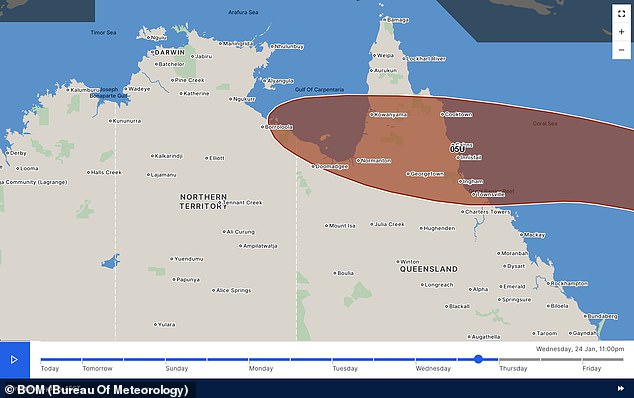
The cyclone could potentially move back towards the state’s coast, with residents from Townsville to Rockhampton in the line of fire (Photo: Tropical cyclone forecast for Wednesday)
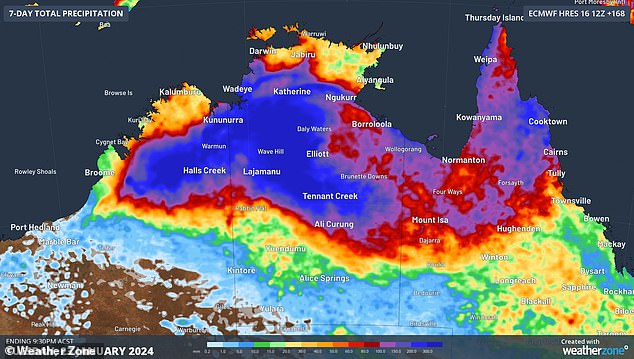
Up to 300mm of accumulated rain is forecast to fall across parts of Queensland and The Northern over the seven days to Tuesday.
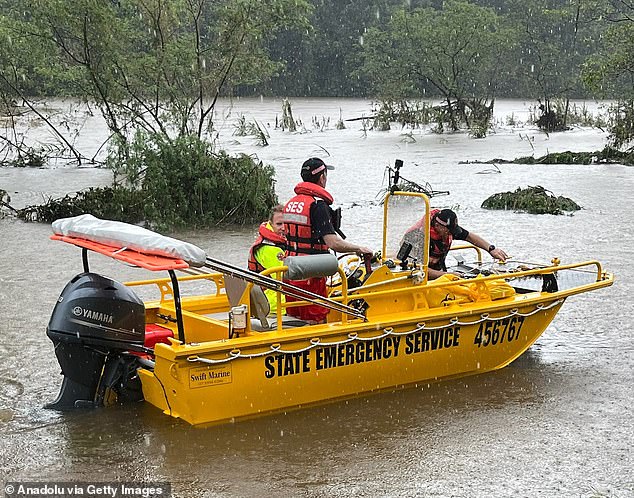
Queensland SES crews conducted a search and rescue operation in the flooded area in Queensland on December 18, rescuing more than 300 people from flooding
The agency expects the tropical low to move slowly until it heads south or south-southwest Sunday through Tuesday.
Communities north of Cairns are still suffering from record flooding caused by Tropical Cyclone Jasper, which made landfall in December.
The area was one of the worst hit, with houses destroyed and nearly 300 people evacuated from Wujal Wujal.
It comes as heavy rain continues to lash Queensland’s northern tropical coast with a total of 166mm in 24 hours. The Gilbert River catchment and 130mm at Mareeba.
The area continued to see very heavy rainfall, with 704mm of rain in Stewart Creek Valley and 632mm in Daintree Village in the seven days to Thursday.
Authorities issued flood warnings for four rivers in the far north, while the Gold Coast was also flooded after heavy rain and thunderstorms.
Residents are now preparing for even more destructive weather as the government sends emergency housing to areas hit by Cyclone Jasper.
In a first in Australia, the Albanian government has started deploying emergency shelters, called Humanihuts, for residents north of Cairns.
The Defense Force is also helping to bring a convoy of containers to the region by barge.
More than 30 cabins – each with its own power, water and space for up to four people – and six bathrooms have been sent to Wujal Wujal, Degarra and Ayton.
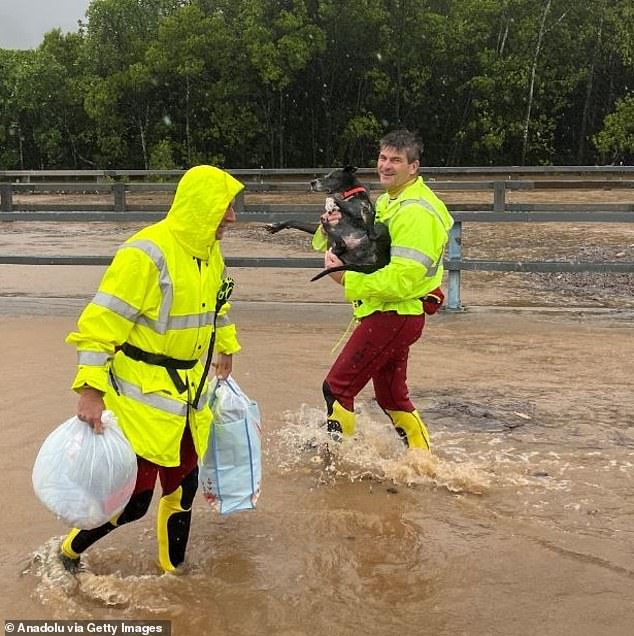
An SES member rescues a dog during a search and rescue operation in the flooded area of Queensland, Australia last month
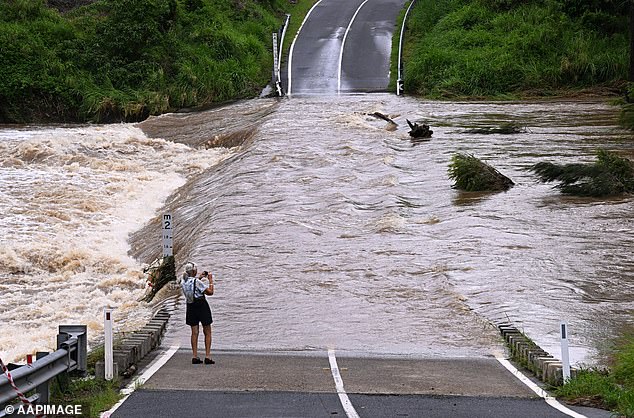
A woman is seen taking a photo of the Coomera River flooding Clagiraba Road on the Gold Coast on January 2
Meanwhile, the Northern Territory continues to face the threat of flooding as heavy rain lashes the state.
About 100 people from the remote community of Pigeon Hole, west of Katherine, were evacuated on Thursday after homes were flooded.
About 40 people from Pigeon Hole – a settlement on the Bilinara Aboriginal Land Trust surrounded by Victoria River Downs pastoral properties – were relocated, while another 50 in nearby Daguragu left for Kalkarindji.
Police predict the Pigeon Hole community could be underwater for a week.
There were also reports Thursday evening of a helicopter pilot rescuing three people from the roof of a truck and taking them to Victoria River Roadhouse, west of Katherine.
The heavy rain will continue into the weekend, with 690mm of rain over seven days at Wadeye, south of Darwin.
Widespread falls of 100mm, with heavy rain lashing the Victoria River catchment, have also closed roads and flooded communities.
Authorities are also on standby at the Daly River, where flood levels were being monitored.
About 10,000 people are still without power in Western Australia, with outages in the Wheatbelt, Goldfields and Great Southern regions due to recent storms.
